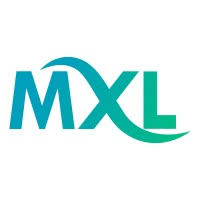
Robinjasper1109
Uploaded on Sep 22, 2025
In today's fast-paced corporate world, where information is abundant and employee time is a valuable commodity, traditional training models are proving to be a challenge. Long, static seminars and overwhelming manuals simply don't align with the needs of a modern workforce. This is where microlearning enters the picture, offering a refreshingly simple and effective solution. Often misunderstood as just "short videos," microlearning is a fundamental shift in how we learn. This guide breaks down the core concept, revealing why it’s not just a passing trend, but a vital strategy for every organization, from Finance to Healthcare. Breaking Down the Basics At its core, microlearning operates on a few key, simple principles that make it so powerful. Brevity is Key: The most defining characteristic is the short duration of the content. Each learning module typically lasts between 2 to 10 minutes, making it easy for employees to consume during a coffee break, a commute, or in between tasks. This bite-sized approach respects a professional's limited time and aligns with modern attention spans. One Concept, One Module: To maintain brevity, each module is laser-focused on a single learning objective. Instead of a broad course on "Workplace Safety," a microlearning program would break it down into focused Microlearning Courses like "Proper Fire Extinguisher Use" or "Identifying Trip Hazards." This singular focus prevents cognitive overload and improves information retention. Variety and Engagement: Passive learning is a fast track to disengagement. A successful microlearning application uses a mix of dynamic formats to keep learners hooked. This includes short videos, interactive quizzes, infographics, and even quick simulations. A robust Microlearning Platform is essential for seamlessly delivering this diverse content. Just-in-Time Access: The true power of microlearning lies in its accessibility. It provides learners with the information they need, precisely when they need it. An Insurance agent can pull up a two-minute video refresher on a complex policy right before a client meeting, or a Retail employee can watch a quick tutorial on a new point-of-sale system on the shop floor. The Technology That Drives the Concept While the concept of microlearning is simple, its effective implementation relies on a powerful technology ecosystem. The right Microlearning Tools transform the abstract concept into a practical reality. Content Creation: To create engaging, bite-sized content, organizations use specialized Microlearning Authoring Tools. These user-friendly tools allow trainers and subject matter experts to quickly build interactive modules without needing extensive design skills. The latest innovations include an AI-powered Authoring Tool, which can analyze existing long-form documents and automatically generate a series of interactive microlearning courses, drastically reducing development time and cost. Delivery and Management: A solid Microlearning Platform is the foundation for managing and delivering your content. Beyond basic file storage, a modern Microlearning LMS provides a centralized hub for tracking progress, managing user access, and ensuring a smooth learning experience. The most advanced systems now function as an AI-Powered Learning Platform, using data analytics to understand learner behavior and recommend personalized content. Seamless Application: A well-designed Microlearning Application provides the crucial on-the-go access that modern employees demand. Whether they are on a Mining site or a Pharma lab, a mobile-optimized app ensures learning is always within reach, embedding it seamlessly into the daily workflow. Making an Impact Across Industries The versatility and effectiveness of microlearning make it an ideal fit for a wide range of industries, providing concrete solutions to unique challenges. Finance & Banking: Quickly disseminate updates on compliance regulations, new software features, or security protocols. Healthcare: Provide on-demand refreshers on patient safety protocols, new equipment usage, or HIPAA regulations. Oil and Gas: Deliver critical safety and equipment operation procedures in a format that can be accessed in the field. Pharma: Train a global sales force on new product launches and clinical data in a digestible format. Insurance: Equip agents with up-to-the-minute product knowledge and sales techniques. Conclusion The concept of microlearning is simple, clear, and powerful. By breaking down knowledge into small, manageable chunks and leveraging the right microlearning platforms and tools, organizations can transform their training from a cumbersome obligation into an agile, effective, and continuous process. This approach not only boosts knowledge retention and engagement but also empowers a workforce that is more confident, knowledgeable, and prepared to meet the challenges of tomorrow.

Comments